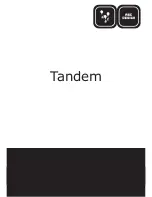
© 2019 TOSS GmbH & Co. KG -Verpackungssysteme- Alle Rechte vorbehalten! Nachdruck, auch auszugsweise, ohne unsere schriftliche Genehmigung nicht gestattet!
32
6.6. Burning in the heating conductor
With the sealing tool held open, the heating conductor should best be "burned in" in such a way that the
"Start" signal is given and the nominal temperature is slowly increased from zero to the burn-in tempera-
ture. The final burn-in temperature should be at least 50°C above the maximum sealing temperature on
the heating conductor. The heating conductor should be monitored (initial colours, hot spots). Calibration
should be carried out again following burn-in.
The initial slow increase of the target temperature is also recommended if a thermally pretreated heating
conductor is used which does not need to be burnt in. In this way the correct temperature conductance of
the heating conductor can be monitored. Errors arising during calibration and the selection of the temper-
ature coefficient can be checked without the heating conductor can get overheated or burn up (
7.).
6.7. When the controller does not work correctly
See points 3.7., 3.6., 5.7., 4.8., 1.3., 1.4., 6.1., 6.2. 6.5. and 7..
6.8. Current Transformer
Caution
(EN)
:
To reduce the risk of electric shock, always open or disconnect circuit from pow-
er distribution system (or service) or building before installing or servicing current transformers.
Attention
(FR)
:
Pour réduire le risque de choc électrique, il faut toujours ouvrir ou déconnecter
le circuit du système de distribution électrique (ou du service) du bâtiment avant d’installer ou
d’entretenir des transformateurs de courant.
EN:
The following must be observed when installing the current transformer:
- The current transformers may not be installed in equipment where they exceed 75 percent of
the wiring space of any cross-sectional area within the equipment.
- Restrict installation of current transformer in an area where it would block ventilation openings.
- Restrict installation of current transformer in an area of breaker arc venting.
- Not suitable for Class 2 wiring methods and Not intended for connection to Class 2 equipment.
- Secure current transformer and route conductors so that the conductors do not directly contact
live terminals or bus.
FR:
Les points suivants doivent être respectés lors de l’installation du transformateur de
courant:
- Le transformateur de courant ne doit pas être installé dans des équipements dans lesquels ils
dépassent 75 % de l’espace de câblage de toute section transversale de l’équipement.
- Ne doit pas être installé dans une zone dans laquelle ils bloquent les orifices de ventilation.
- Ne doit pas être installé dans une zone d’évacuation d’arc du disjoncteur.
- Ne convient pas aux méthodes de câblage de la classe 2 et n’est pas destiné à être connecté
à des équipements de la classe 2.
- Protéger le transformateur de courant et acheminer les conducteurs de manière à ce qu’ils ne
soient pas en contact direct avec des bornes sous tension ou avec le bus.
7. The heating conductor
The heating conductor is an important component of the control circuit because it functions both as a
temperature sensor and heating element at the same time. Due to the complexity and variety involved,
the influence of heating conductor geometry is not discussed here. However, some issues concerning
physical and electrical properties will be addressed.
The measurement principle of the resistance temperature controller requires that the heating conductor
has a positive temperature coefficient, which is set at the PIREG-D2. The use of a heating conductor with
a smaller temperature coefficient than that set on the controller can result in the heating conductor getting
overheated or burning up (
5.7.1.). Despite full heating capacity, the actual value cannot reach the tar-
get value.
During initial heating of the heating conductor to between 250 and 300 °C, the cold resistance of the heat-
ing conductor varies by 2 - 3 % (burn-in effect). This resistance variation results in a zero-point error of 20
- 30 °C. After a few heating cycles, this zero-point error needs to be corrected by a new calibration.
Overheated or burnt-out heating conductors should not be used because of irreversible changes in the
temperature coefficients.
A constructional measure to improve the exact temperature control and to increase the lifetime of the
heating conductor and the Teflon (PTFE) coating is to copper-plate or silver-plate the heating conductor
contacts. This measure ensures that the heating conductor contacts remain cold and allows the controller
to measure only where sealing is taking place. The temperature of the heating conductor can only be
determined by the PIREG-D2 as the mean of all parts of the heating conductor. If any individual parts of
the heating conductor are exposed or otherwise not in contact with any heat dissipating areas, they will
heat up faster than those sections of the heating conductor that are able to dissipate their heat. In this
case, the temperature reached at these sections will be lower than the temperature displayed by the con-
troller and the sealing performance will be worse.
Calibration of the PIREG-D2 is recommended every time a heating conductor is replaced, in order to cor-
rect any tolerances of the heating conductor arising during manufacture. When new heating conductors
are used, burn-in will again be necessary.








































